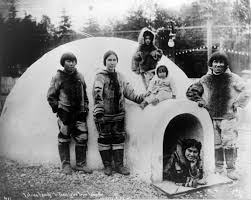'the blood poured from his clothes, and wherever they went, the snow was marked with blood' was very descriptive. I enjoyed the married woman's character a lot because she was willing to die to avenge her husband.
I loved the ending to this story. "Thus punishment falls upon the man who kills," is a strong way to reiterate the main point of the tale. I also enjoyed the included metamorphosis.
The attack on the village was very detailed. Navaranapaluk was punished for lying, but she sort of deserved that fate because she caused many women to die.
I thought it was interesting that two sisters were married to a whale and an eagle. I like the character choices in this story, but I was really confused at the end as to why the whale ended up in such bad shape.
I imagined a beautiful scene when the author was describing the houses and smoke holes in the story. The vibe of the story switches gears when the father rescues the son. I was afraid the people who took him would wake up.
When Atarssuaq attempted to throw his son in the water and let him learn to swim on his own, it reminded me of multiple movies I have seen where the father figure does this exact thing. A lot of these stories just tell if the characters have a strong relationship, but this author gives the background of why the father and son are so close.
I had to imagine a lot of the scenery in the story about Saunikoq and Tungujuluk on my own. I felt like the author could have added descriptions about the sea when either characters were out hunting.
Image Information: Inuit Family and their Igloo, Web Source: Wikimedia Commons
Bibliography: Eskimo Folk-Tales by Knud Rassmussen, Web Source: Eskimo Unit

No comments:
Post a Comment